

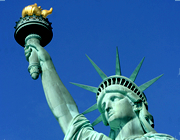
Three islands close to Manhattan with very different attractions: Statue of Liberty is a must, Ellis Island tells the fascinating story of immigration and quiet Staten Island seems a world away from Manhattan, not just a short, free ferry ride!
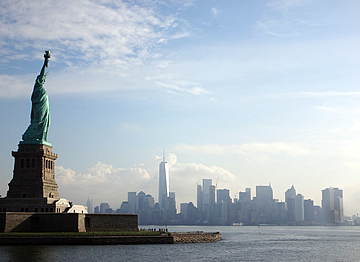
The iconic Statue of Liberty was erected on what was then called Bedloe's Island in 1886. Designed by Auguste Bartholdi, the superstructure by Gustave Eiffel of Eiffel Tower fame, it was a gift from the people of France: "Liberty Enlightening the World".
Since that time the statue has been the first sight of the New World for millions of immigrants, especially when the Ellis Island immigration centre opened in 1892.
The evocative lines "Give me your tired, your poor, your huddled masses .." are part of an 1883 poem written by Emma Lazarus as a fundraiser for the pedestal on which the statue stands.
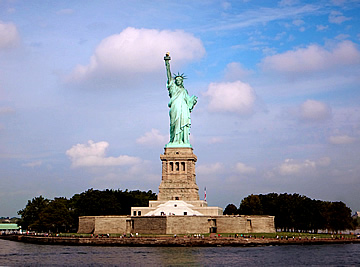
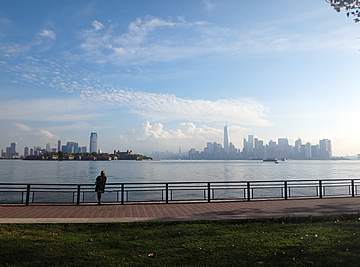
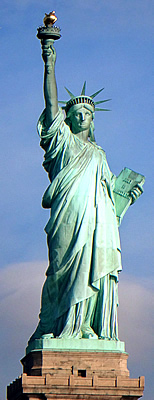
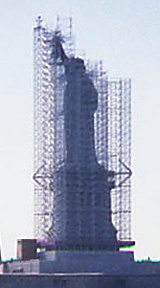
The statue itself stands 46m high, from ground level to the tip of the torch it is 93m. The torch used to be open to visitors but was permanently closed in 1916 after a munitions depot explosion damaged the statue's raised arm.1 The torch was replaced in 1984 during renovations for the centennial.
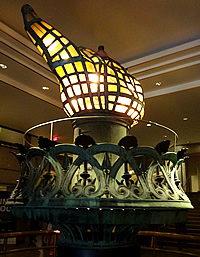
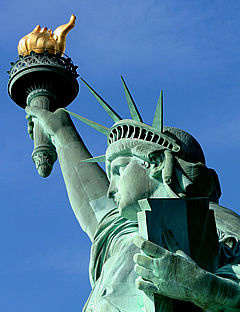
The statue holds a tablet in her left hand on which is inscribed, in Roman numerals, the date of the signing of the Declaration of Independence: July 4, 1776.
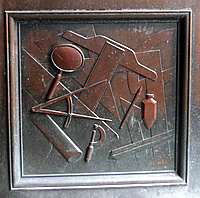
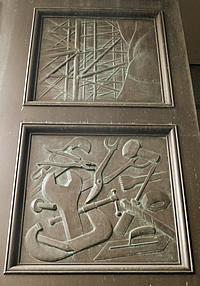

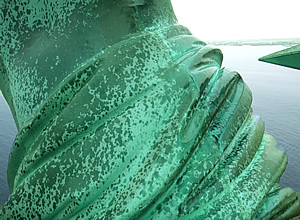
The first structure to be be built on the island was, in fact, the star-shaped Fort Wood at the centre of which Liberty now stands. The island was renamed Liberty Island in 1956.
Between 1984 and 1986 the statue was renovated for the centennial celebrations. This included replacement of the torch - the original can still be seen in the musuem. The statue was completely covered in scaffolding for the renovation - nicely timed for one of my visits!
In 2015 we both finally made a visit to the statue - we'd passed it many times before on various boat trips but never actually been inside.
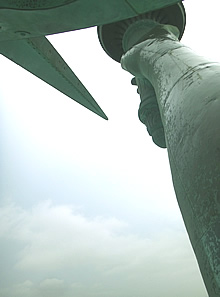
We had bought tickets in advance to make sure we got to go up into the crown as there is limited access. It's quite a climb up, with a stop at an observation level at the top of the pedestal for views of Manhattan. Then on up the spiral staircase - there are two, one for going up and the other for descending - into the crown. It's rather a cramped space but you do get close-up views of the inside of the copper shell and, through the windows, the arm holding aloft the torch.
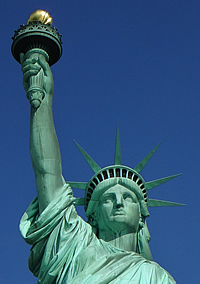
There are 25 windows in the crown but only a few are very slightly open so photography is a little tricky, especially on a bright day. It was actually quite dull when we went up but on our last morning it was glorious so we took the ferry again, though of course we couldn't get up into the crown!
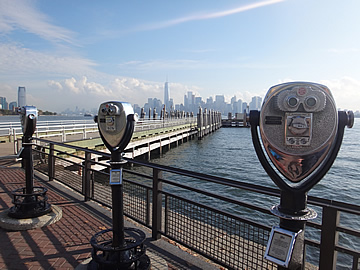
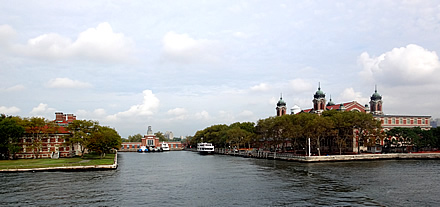
Before 1885 there were few restrictions on immigration to the US. As long as the incoming ship had been declared free of all "loathsome and contagious diseases" the passengers were free to disembark and begin their new lives. From 1855 immigration formalities were completed by individual states, the immigration station for New York being Castle Garden (now Castle Clinton National Monument)1 - around 8 million immigrants were processed in the following five years.2
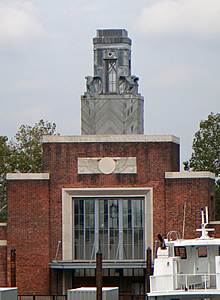
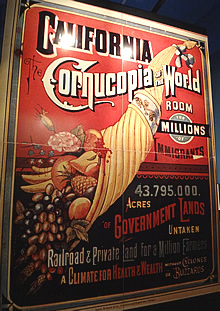
In 1890 immigration was transferred to federal jurisdiction and the New York station was at the Barge Office in Battery Park until a new station was opened on Ellis Island in 1892.
The original wooden buildings on Ellis Island had burned down in 1897 to be replaced by the current buildings - many records were lost in the fire.
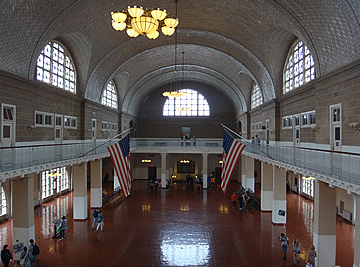
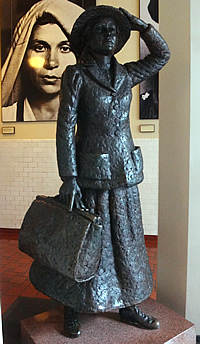
Between 1892 and 1954 when the station was closed 12 million immigrants passed through the station. Their medical condition was checked and they were asked a number of questions including their occupation and how much money they had with them. Only 2 per cent were refused entry and returned to their embarkation point at the steamship company's expense. A record 11,747 arrived on April 17, 1907.
For 50 years from 1904 the ferryboat Ellis Island transported immigrants and employees between Ellis Island and Manhattan.3 It could carry up to 1,000 passengers who were separated on two decks: upper deck for staff and lower deck for immigrants.
Today there are audio tours to be taken, films to watch and many exhibits. We chose just to wander the halls starting in the Baggage Room on the first (ground) floor where immigrants left their belongings while undergoing the immigration process.
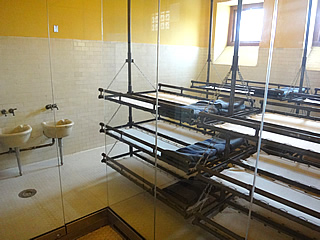
The imposing Registry Room was where immigrants were questioned and underwent medical examination. The central hall extends through two levels on the second and third floors - surrounding the space on the third floor there are two long dormitories for temporary detainees, one on each side. In 1908 they were refurbished and divided into fourteen rooms - one has been restored.
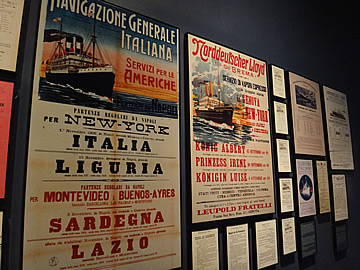
There are many evocative photographs of hopeful or worried-looking immigrants, ships with crowded decks, contemporary posters extolling the virtues and higher wages in the USA, but also others which advertise anti-immigration meetings.

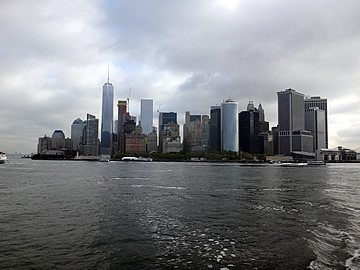
The Staten Island Ferry has got to be one of the best deals on the planet - it's free, you get great views of the Statue of Liberty and Lower Manhattan, and you get to visit Staten Island!


Many people just go straight back to Manhattan but they miss something very special. Walk along the coast a short way and you come to the Staten Island 9/11 Memorial commemorating all Staten Islanders who died as a result of the terrorist attacks.

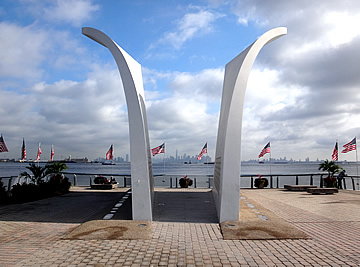
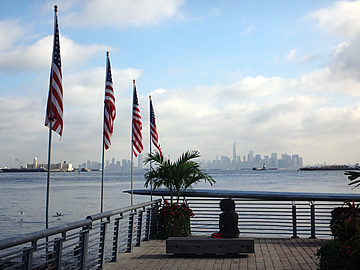
It is exceptionally atmospheric, composed of two wings which frame the Freedom Tower across the water.
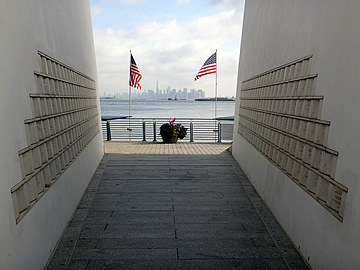
On both sides of each wing are silhouette profiles of all the dead with names, occupations and dates of birth.
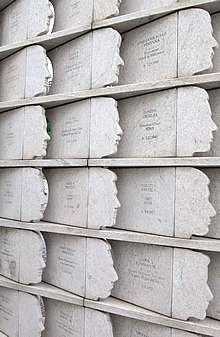
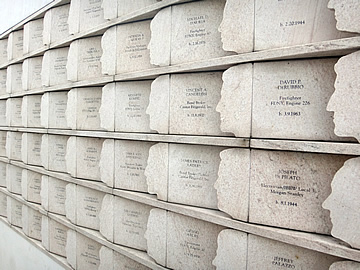
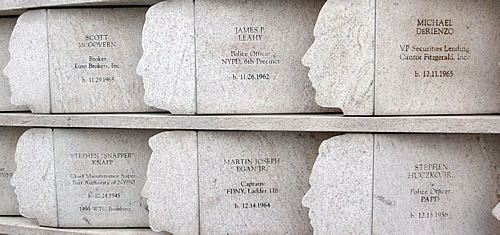
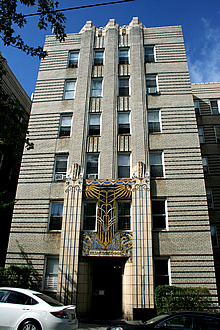
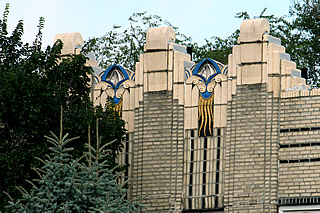
We had great difficulty finding any information such as how to get around the island - we couldn't find any tourist office either inside the ferry terminal or outside. We eventually got a map from a public library.
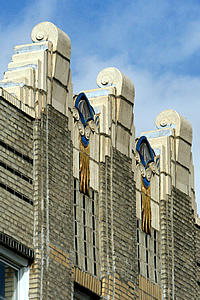
Staten Island is quiet and residential, down-at-heel in places but in others spacious green and pleasant..We sought out the beautiful Art Deco Ambassador apartment building - also famous as the home of Paul Newman before he moved to Manhattan.
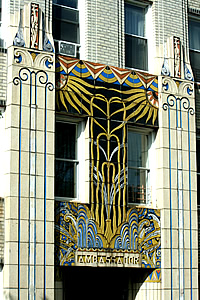
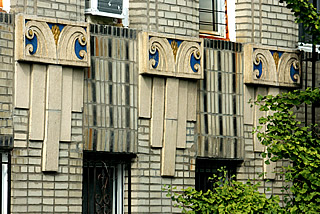
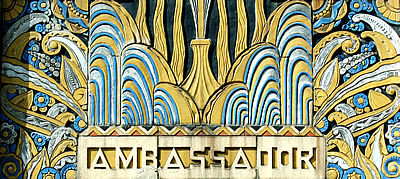
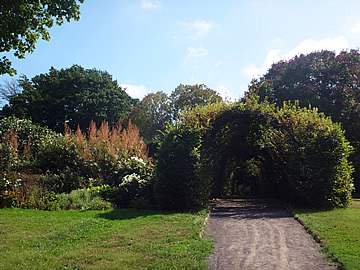
We caught a bus to Snug Harbor Gardens4 - free with our seven day NYC travel pass but we waited an age for one to turn up!

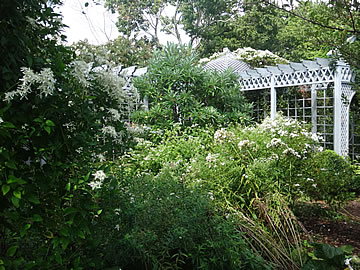
A number of themed gardens are set in a green landscape of grass and trees.


Easily the most impressive is the Chinese Scholar's Garden based on Ming Dynasty Gardens (1368-1644) with extensive use of rockery and water and typical architectural features such as circular gateways.
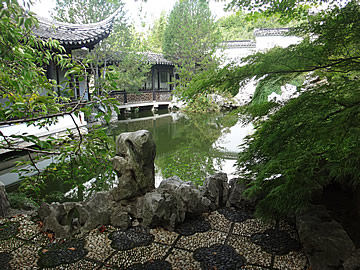
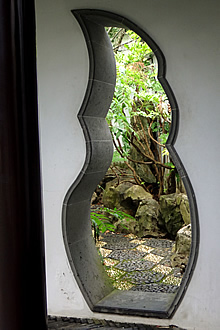
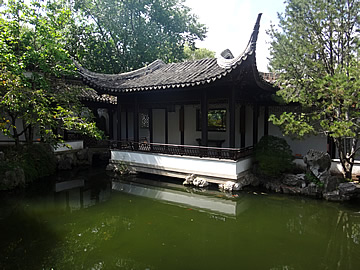
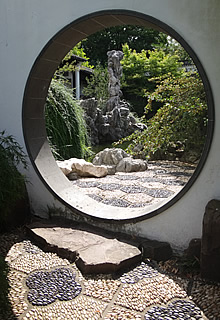
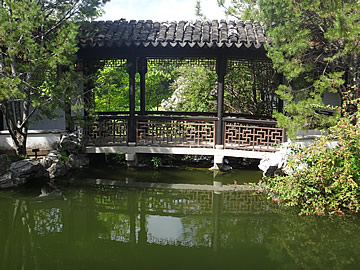

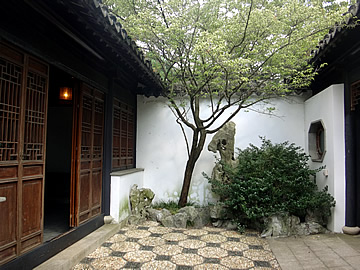
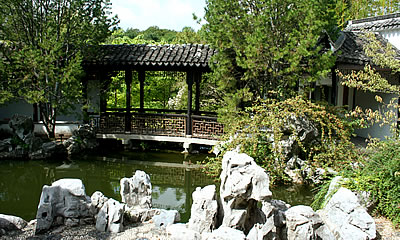
We exited at the south side of the gardens on Henderson Avenue and caught a bus to Denino's Pizzeria and Tavern - none of the buses we took were on time and all were driven jerkily!
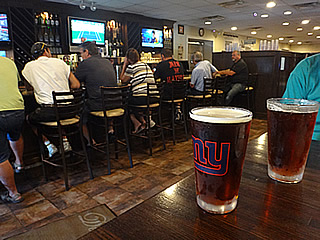
We sat in the bar at one of the tables along the wall (there is extensive seating in two large rooms but we much preferred to be in the bar) and had our first Staten Island Pale Ale which went down very quickly! The second with an excellent Margherita pizza.

We really liked this place, it is a proper neighbourhood bar, people coming and going, sitting at the bar, all seemed to know each other and the barman who was very genial. It has a great atmosphere, great food and great beer - what more could you ask for!